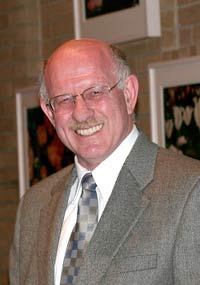
Handy Links
SLAC News Center
SLAC Today
- Subscribe
- Archives: Feb 2006-May 20, 2011
- Archives: May 23, 2011 and later
- Submit Feedback or Story Ideas
- About SLAC Today
SLAC News
Lab News
- Interactions
- Lightsources.org
- ILC NewsLine
- Int'l Science Grid This Week
- Fermilab Today
- Berkeley Lab News
- @brookhaven TODAY
- DOE Pulse
- CERN Courier
- DESY inForm
- US / LHC
SLAC Links
- Emergency
- Safety
- Policy Repository
- Site Entry Form

- Site Maps
- M & O Review
- Computing Status & Calendar
- SLAC Colloquium
- SLACspeak
- SLACspace
- SLAC Logo
- Café Menu
- Flea Market
- Web E-mail
- Marguerite Shuttle
- Discount Commuter Passes
-
Award Reporting Form
- SPIRES
- SciDoc
- Activity Groups
- Library
Stanford
Around the Bay
Dorfan Today: SSRL Resumes Operations
 Today marks the return to operations for the Stanford Synchrotron Radiation Laboratory (SSRL) as SPEAR3 begins accepting users for the 2007 experimental run. This year's run promises to be as exciting as ever, with a series of upgrades installed over the last 2 months which are designed to bring us closer to continuous operation of SPEAR3 at its full design current of 500 mA.
Today marks the return to operations for the Stanford Synchrotron Radiation Laboratory (SSRL) as SPEAR3 begins accepting users for the 2007 experimental run. This year's run promises to be as exciting as ever, with a series of upgrades installed over the last 2 months which are designed to bring us closer to continuous operation of SPEAR3 at its full design current of 500 mA.
More than 2,000 scientists from around the globe are involved in research at SPEAR3. Their research encompasses a broad spectrum of topics in the physical and life sciences, with physics, chemistry, biology, environmental and medical science as main areas of focus. This research is carried out using SPEAR3's eleven x-ray beamlines. Each beamline can provide x-rays to about three stations (hutches), where the researchers place their specially-prepared material samples to analyze their structure. The highly talented SSRL staff help the researchers configure the beamline station that is best matched to the type of x-ray analysis needed for their experiment, and provide scientific and technical support. This year, about one thousand distinct experiments will be conducted at SPEAR3, which amounts to about five experimental start-ups per day.
Among these recent upgrades are a suite of new capabilities both on the SPEAR3 accelerator itself and on the beamlines. Accelerator-side improvements will streamline the injection of the beam as the current is periodically replenished, easing disruption to users conducting experiments. But the upgrades that promise to have the greatest impact are on the beamlines themselves.
Chief among SSRL's accomplishments this fall has been the installation of the new Molecular Observatory for Structural Molecular Biology at Beamline 12. This new macromolecular crystallography station, funded by the Gordon and Betty Moore Foundation in a collaboration between CalTech and SSRL, will give researchers a new tool for high resolution imaging of the molecules that make up living systems. At the heart of this observatory is a new, in-vacuum undulator that will provide access to a range of x-ray characteristics so far unavailable among SSRL's beam lines. (Read full story here.)
Several other beamlines will offer new capabilities to users this year. Beamline 7 will become fully operational over the course of the upcoming experimental run, and thanks to a special new monochromator, will offer increased performance for materials science experimentation at one of its three stations. Beamlines 5-1 and 5-2 are now fully commissioned and available to users for the first time, providing important new tools for surface chemistry and magnetic studies, respectively. And Beamline 6 now boasts a new x-ray microscope, funded by the National Institutes of Health, that will make possible yet higher resolution imaging of biological tissues.
These are a few of the major upgrades now available to the research community working at SSRL, and there are more to come. The users will continue to enjoy access to our state-of-the-art facilities for research in many important fields, much of which will bring benefit to society in the near future. As we most recently witnessed with the award to Roger Kornberg of the Nobel Prize in Chemistry for work conducted at SSRL, the importance of maintaining a world-class research facility cannot be underestimated.
—Jonathan Dorfan, October 30, 2006